Emirates Stadium, Highbury House, 75 Drayton Park, London N5 1BU
The Emirates Stadium, located in Holloway, London, has been the home ground of Arsenal Football Club since its completion in 2006. Boasting a current seated capacity of 60,704, it ranks as the fifth-largest football stadium in England.
In this article we’ll review every seating option available to you including every grandstand and hospitality option too. We’ll also give you plenty of information about the stadium so you can decide which is the best seats at Emirates Stadium for you.
Our quick picks of the best seats at Arsenal matches
If you’re looking for a quick roundup here’s what we think are the best. To find out why read this article in full.
Low Budget
North Bank and Clock End Upper Tiers (Blocks 91-93 and 98-100): These seats offer a good view of the game, and are among the cheapest options.
Mid Budget
East and West Stands Upper Tier (Blocks 112-115 and 123-125): These seats provide a central view of the pitch, offering a balance between price and view quality.
High Budget
Club Level (Blocks 72-74 and 77-79): These are premium seats that offer the best views, access to exclusive bars and restaurants, and complimentary half-time drinks. The Club Level seats are the most expensive but offer the most luxurious match-day experience.
Arsenal’s relocation from their former home ground, Highbury, to the Emirates Stadium was motivated by Highbury’s limited capacity and its location within a residential area. The modern Emirates Stadium, situated in a more industrial area, offers ample space for parking and additional amenities.
Arsenal Football Club’s stadium history
Arsenal Football Club, originally known as Dial Square, was founded in 1886 by a group of workers at the Royal Arsenal, a munitions factory in Woolwich, South East London.
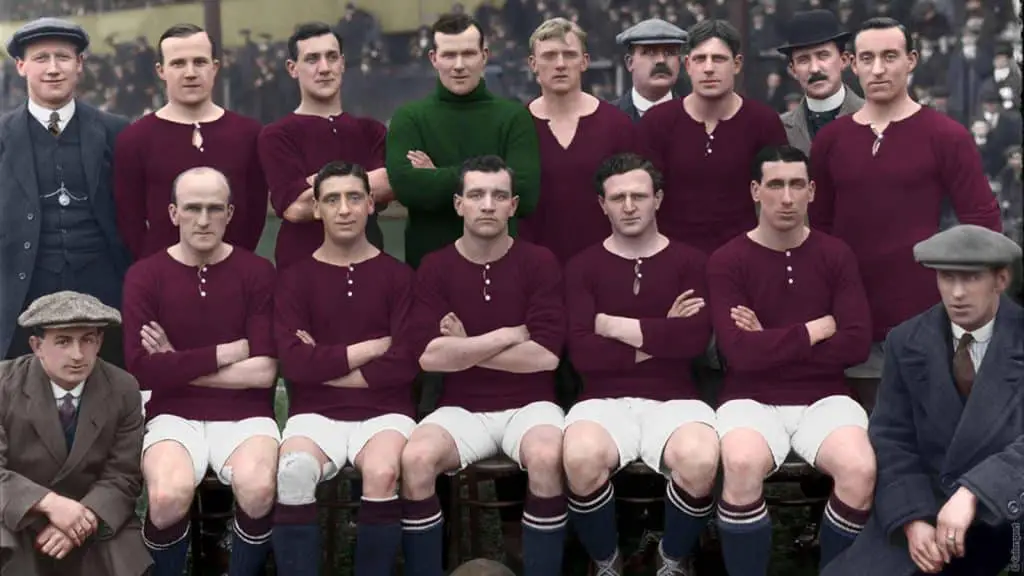
In 1891, the club turned professional and changed its name to Woolwich Arsenal. In 1893, Arsenal joined the Football League, becoming the first club from the South of England to do so.
Moving to Highbury
In 1913, following financial struggles and poor attendances at their Manor Ground in Plumstead, the club relocated to Highbury, North London. In the same year, they dropped “Woolwich” from their name, becoming simply Arsenal.

Shortly after their move, Arsenal experienced a remarkable rise in the league, largely due to the influential appointment of manager Herbert Chapman in 1925.
Under Chapman’s leadership, the club adopted new tactics and training methods, which led them to their first FA Cup win in 1930 and their first-ever league title in 1931.
Post-War Success
Arsenal maintained their status as a top English club in the years following World War II, winning the league title in 1948 and 1953, as well as the FA Cup in 1950. However, the club experienced a period of decline in the late 1950s and throughout the 1960s, with only sporadic successes.
The George Graham Era
The appointment of George Graham as manager in 1986 marked the beginning of a new era for Arsenal. Graham implemented a disciplined and well-organised playing style, which brought the club multiple successes, including two league titles, two League Cups, an FA Cup, and a European Cup Winners’ Cup.
The Arsène Wenger Years
In 1996, Frenchman Arsène Wenger was appointed as manager, bringing with him a new style of play and a focus on sports science and nutrition. Wenger’s influence led Arsenal to great success, including three Premier League titles and seven FA Cups.
The 2003-2004 season was particularly memorable, as Arsenal became the first team in over a century to go an entire top-flight league season unbeaten, earning the nickname “The Invincibles.”
Famous Players and Managers
Over the years, Arsenal has been home to numerous renowned players and managers who have contributed to the club’s success. Iconic players such as Thierry Henry, Dennis Bergkamp, Tony Adams, and Ian Wright have left an indelible mark on the club’s history.
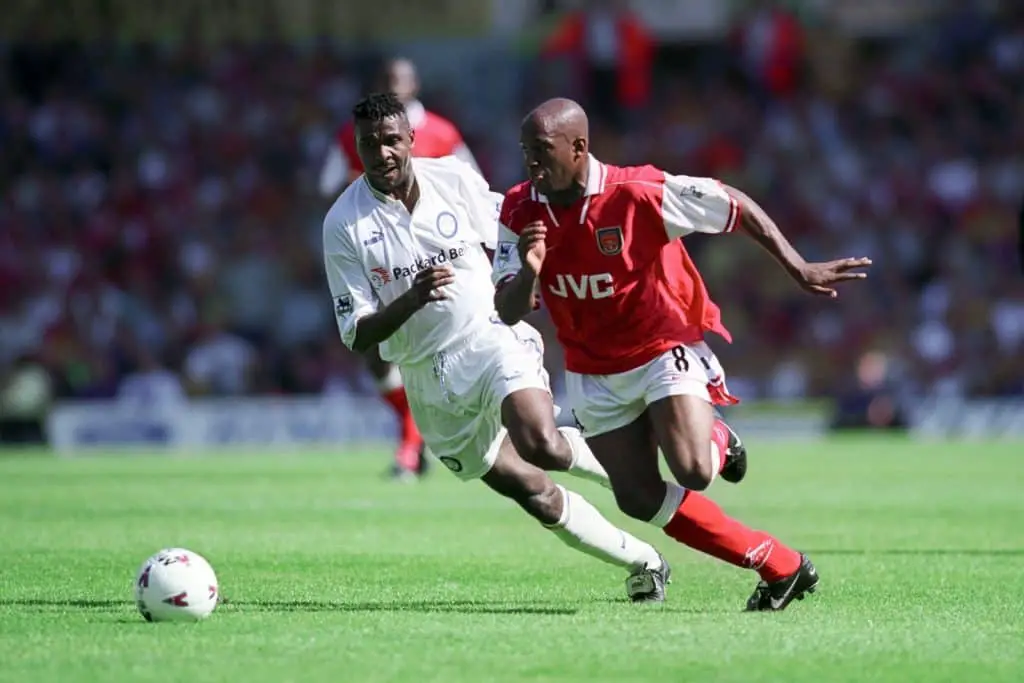
In terms of management, Arsène Wenger and Herbert Chapman stand out as two of the most influential figures in shaping the club’s philosophy and style of play.
The Emirates Stadium
The Emirates Stadium was built at a cost of £390 million and has witnessed a process of “Arsenalisation” since 2009, aimed at restoring visible links to Arsenal’s history. The stadium has hosted international fixtures and music concerts, in addition to domestic football matches.
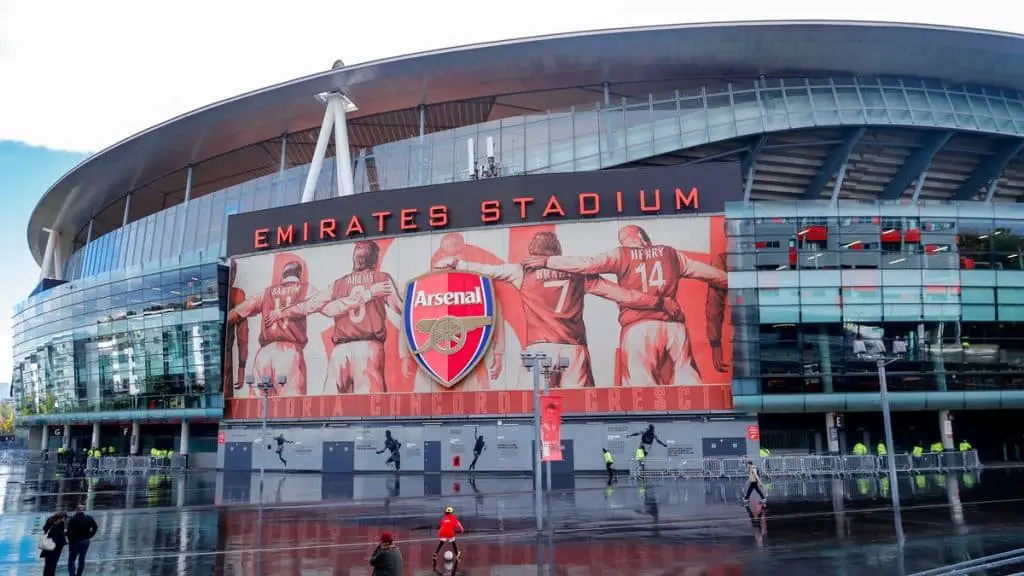
The stadium is recognised for its environmentally friendly features, including being powered by renewable energy, having a rainwater harvesting system, and a green roof.
The Emirates Stadium Grandstands
The Emirates Stadium comprises four grandstands that encompass the entire pitch
The North Bank Stand – Located behind one of the goals, this stand is a favourite among Arsenal’s most passionate supporters.
The Clock End Stand – Situated opposite the North Bank Stand, the Clock End Stand is named after the iconic clock that was originally at Highbury and now adorns this stand.
The East Stand – Running along the side of the pitch, this stand is home to the Directors’ Box and various hospitality suites.
The West Stand – Located opposite the East Stand, the West Stand houses the changing rooms, dugouts, and media facilities.

Seating arrangement
At the Emirates Stadium, the seamless design that encircles the entire pitch creates an immersive experience for spectators and players alike. The stadium is divided into four main stands: the North Bank Stand, the East Stand, the Clock End Stand, and the West Stand.
Each stand features different seating levels, including the Lower Level, Upper Level, Diamond Club Level, and Director’s Box Level.
The North Bank Stand comprises 8 blocks in the Lower Level (numbered 5-12), 16 blocks in the Upper Level (numbered 94-109), 50 blocks in the Diamond Club Level (numbered 11-61), and 13 blocks in the Director’s Box Level (numbered 45-58).
The East Stand houses 8 blocks in the Lower Level (numbered 13-20), 6 blocks in the Upper Level (numbered 110-115), 29 blocks in the Diamond Club Level (numbered 1-12), and 7 blocks in the Director’s Box Level (numbered 59-66).
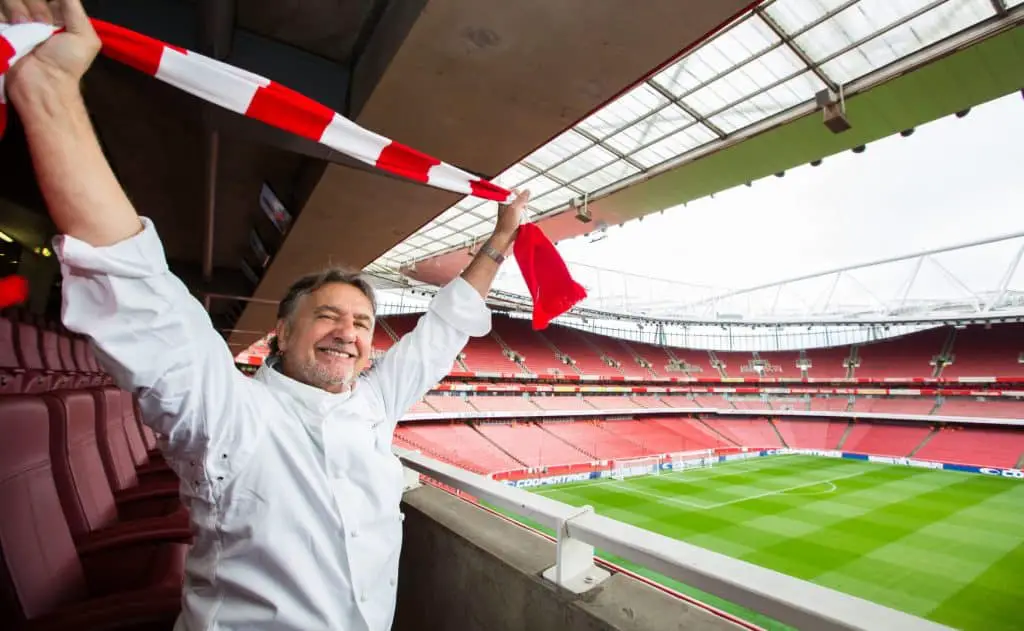
The Clock End Stand includes 8 blocks in the Lower Level (numbered 21-28), 16 blocks in the Upper Level (numbered 116-131), 57 blocks in the Diamond Club Level (numbered 91-147), and 13 blocks in the Director’s Box Level (numbered 67-80).
Lastly, the West Stand features 8 blocks in the Lower Level (numbered 29-32 and 1-4), 6 blocks in the Upper Level (numbered 132-134 and 91-93), 19 blocks in the Diamond Club Level (numbered 1-10 and 142-150), and 8 blocks in the Director’s Box Level (numbered 81-84 and 41-44).
In total, the Emirates Stadium has a capacity of 60,432 seats distributed across the different levels as follows: 24,425 seats in the Lower Level, 26,646 seats in the Upper Level, 7,139 seats in the Diamond Club Level, and 2,222 seats in the Director’s Box Level. The unique design and diverse seating options cater to various preferences and budgets
Grandstand reviews of Emirates Stadium
The Clock End Stand
Lower Level
The Lower Level (numbered 21-28) at the Clock End Stand is situated behind the goal to the south of the pitch, providing fans with a unique perspective on the game.
This position allows spectators to closely observe the goalkeepers’ actions and witness goal-scoring opportunities up close. However, it’s essential to consider that the views of the far end of the pitch might be slightly obstructed, which may not appeal to everyone.
Upper Level
Located above the Lower Level, the Upper Level (numbered 116-131) at the Clock End Stand offers a more elevated view of the pitch.
This vantage point allows fans to witness goal-scoring opportunities and goalkeeping actions from a broader perspective, providing a better understanding of the teams’ tactics and strategies. However, some fans might find the distance from the field less engaging, as it may be challenging to discern individual player movements and interactions.
Club Level
The Diamond Club Level (numbered 91-147) caters to spectators who seek a more exclusive and luxurious experience. Positioned behind the goal, this section offers a balance between the intimacy of the Lower Level and the panoramic views of the Upper Level.
However, the premium offering might not resonate with all football fans, particularly those who prefer a more authentic and unpretentious atmosphere.
Additionally, the high cost of seats in this section could be a significant barrier for some spectators.
Director’s Box Level
The Director’s Box Level (numbered 67-80) is reserved for distinguished guests and club officials. These seats, situated behind the goal, offer some of the best views in the stadium, providing an excellent vantage point to observe the match.
However, access to this level is limited, and the experience may not reflect the atmosphere typically enjoyed by most football fans.
Away Fans: South East Corner
Away supporters are situated in the South East corner of the Emirates Stadium. Upon arrival, turnstiles open two hours prior to kick-off, providing ample time to settle in. The food and drink options available to away fans include an ‘Early Bird’ special, where a pie and pint/large soft drink can be purchased for £5 up to 45 minutes before kick-off.
However, it’s important to note that no alcohol is served on UEFA nights, and there are no cash machines inside the stadium, so bringing cash is advisable to avoid long queues for card payments. ATM machines can be found by the Tesco on Drayton Park and next to The Arsenal Highbury House store on Drayton Park.
East Stand
The views in the Lower Level (numbered 13-20) at the East Stand may vary significantly depending on the block you are in, as seats can range from being near a corner post to the halfway line.
While the sight lines of the goals might be partially obstructed in some areas, other seats offer fans a unique end-to-end view of the game. This advantage allows spectators to appreciate players’ movements across the field and witness crucial midfield dynamics.
Upper Level
In the Upper Level (numbered 110-115) at the East Stand, the distance from the pitch and the specific block you are in can impact the experience, making it difficult for some fans to fully appreciate individual player actions and interactions.
Nevertheless, the elevated position offers a comprehensive perspective of the game, enabling fans to better understand the teams’ tactics and overall gameplay strategies.

Club Level
Although the exclusive nature and cost of the Club Level (numbered 1-12) might not appeal to all fans, particularly those who prefer a more down-to-earth atmosphere, it caters to spectators seeking a luxurious and sophisticated experience.

The specific block you are in can greatly influence the view, as some seats might be closer to the corner while others are near the halfway line. The Diamond Club Level combines the intimacy of the Lower Level with the sweeping views of the Upper Level, while featuring a bar for added convenience.
Director’s Box Level
Access to the Director’s Box Level (numbered 59-66) at the East Stand is limited, and the ambiance may not reflect the typical football experience enjoyed by most fans.
However, reserved for distinguished guests and club officials, these seats offer some of the best stadium views, as they are situated along the length of the pitch. The specific block you are in can greatly impact the experience, offering varying perspectives of the game.
The official director’s box is located in this area, and the players’ tunnel leads out onto the pitch at the centre of this grandstand, adding to the overall prestige of this section.
The Player’s Tunnel
The players’ tunnel in the East Stand of the Emirates Stadium is located near the lower tier seats. This proximity allows fans in the lower tier to have a closer view of the players as they enter the pitch. As a result, spectators in this area may feel a stronger connection to the game.
The tunnel serves as a key element of the match day experience, symbolising the relationship between the players and the fans who support them. For the lucky fans in the edge seats of blocks 1 and 32 you’ll get to see the players up close and personal.
North Bank Stand
Lower Level
Located behind the goal, the Lower Level of the North Bank Stand, comprising blocks 5-12, provides fans with a unique opportunity to witness goal-scoring attempts and goalkeeper actions from a close vantage point.
Although following the game might be more challenging when the action is on the opposite side of the pitch, the proximity to the field and the goal allows spectators to immerse themselves in the excitement of each scoring opportunity and enjoy the game from a distinct perspective.
Upper Level
The Upper Level in the North Bank Stand, consisting of blocks 94-109, offers an elevated view of the match from behind the goal.
While visibility of the game can be limited when the action is on the far end of the pitch, the higher vantage point allows fans to gain insights into team formations and tactics, focusing on goal-scoring chances and defensive strategies.
The unique angle provided by blocks 94-109 delivers an engaging experience for spectators who appreciate observing the game from a different viewpoint.
Club Level
For fans seeking a more exclusive and luxurious experience while watching the game from behind the goal, the Club Level in the North Bank Stand, comprising blocks 11-61, is an ideal choice.
Balancing the closeness of the Lower Level and the elevated perspectives of the Upper Level, this section offers a distinct match day experience.
Upper Level
Though the premium nature of the Diamond Club Level might not appeal to all, it caters to those who desire a heightened sense of comfort and sophistication while enjoying the game.
Director’s Box Level
Offering a prime view of the pitch from behind the goal, the Director’s Box Level in the North Bank Stand, encompassing blocks 45-58, is reserved for distinguished guests and club officials. These seats allow guests to observe the match’s finer details, capturing the excitement and intricacies of each play.
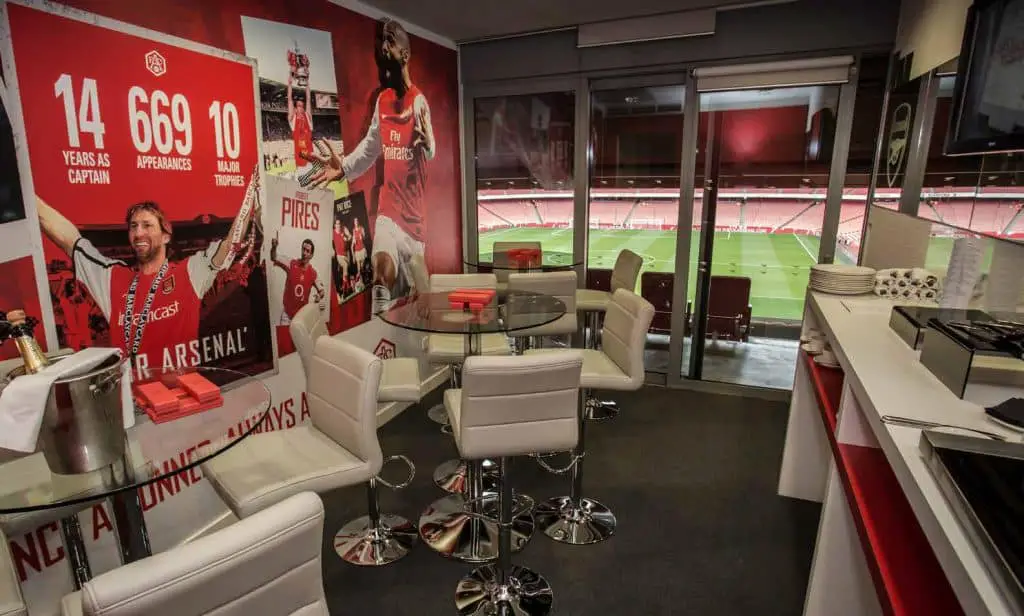
While access to this level is limited, those fortunate enough to experience it will enjoy a privileged vantage point and a memorable matchday atmosphere from blocks 45-58.
West Stand
Lower Level
The Lower Level of the West Stand, which includes blocks 1-4 and 29-32, stretches along the entire sideline of the pitch, presenting fans with diverse views, from the corner posts to the halfway line.
Being close to the field, spectators can experience the intensity of the game, with a front-row perspective of the players and the action on the pitch.
Although some seats may be near the corner posts, those located around the halfway line offer a more holistic view of the match and a greater appreciation of team strategies and dynamics.
Upper Level
The Upper Level in the West Stand, consisting of blocks 91-93 and 132-134, delivers an elevated perspective of the match, spanning the entire sideline of the pitch. This height advantage enables fans to better understand team formations and tactics while also appreciating a wide-ranging view of the game.
The seating options in blocks 91-93 and 132-134 cover the corner posts to the halfway line, providing an appealing experience for spectators who enjoy observing the game from various angles.
Diamond Club Level
For fans interested in a more exclusive and upscale experience while watching the game along the sideline, the Diamond Club Level in the West Stand, incorporating blocks 1-10 and 142-150, is a perfect choice.
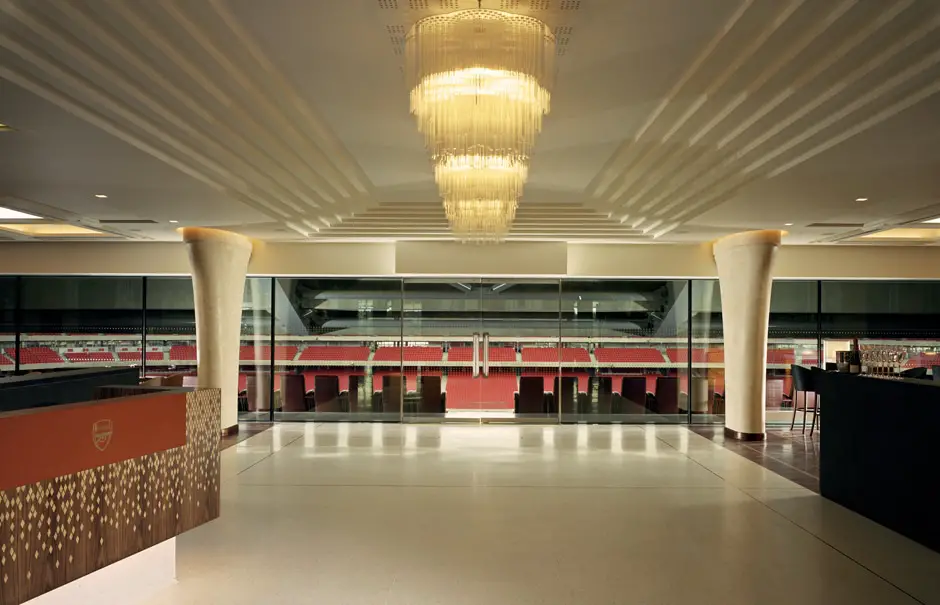
Combining the intimacy of the Lower Level with the sweeping perspectives of the Upper Level, this section promises a remarkable matchday experience. While the luxurious nature of the Diamond Club Level may not be everyone’s preference, it caters to those seeking an enhanced level of comfort and refinement during the game.
Director’s Box Level
Featuring a prime view of the pitch along its entire length, the Director’s Box Level in the West Stand, which includes blocks 41-44 and 81-84, is reserved for VIP guests.
These seats provide an opportunity to observe the match’s subtleties, highlighting the excitement and nuances of each play. Although access to this level is restricted, those fortunate enough to be in attendance will enjoy an exclusive vantage point and an unforgettable matchday ambiance from blocks 41-44 and 81-84.
The Best Seats at Emirates Stadium?
For the ultimate matchday experience at Emirates Stadium, blocks 1 and 32 in the Lower Level are often considered the best seats.
These blocks are located next to the players’ tunnel, allowing fans to be up close and personal as the players walk onto the pitch before the match begins and during halftime.
Spectators in these seats can witness the emotion and excitement on the players’ faces, adding a unique and intimate dimension to their experience.

Moreover, these seats offer a fantastic view of the game along the sideline, providing a balance between close-up action and an overall perspective of the field. From this vantage point, fans can enjoy the match’s finer details and appreciate the tactics and strategies employed by both teams.
Blocks 1 and 32 in the Lower Level combine the thrill of being close to the players with an excellent view of the pitch, making them the most coveted seats at Emirates Stadium. Ideally you want seats to the right of Block 1 and to the left of Block 32. Good luck!
How to get a season ticket for Arsenal
The waiting time for a General Admission Season Ticket can be between 5 to 10 years, and supporters can check their position on the waiting list by logging in to their online account. Fans are required to keep their contact details updated and respond to the club’s communication requesting confirmation of their waiting list position(s). The waiting list for wheelchair positions or VI/Ambulant seating is separate from the General Admission waiting list and can be applied for by contacting the Disability Liaison Team.
The availability of seats on the Lower Tier is limited, and priority is given to current Season Ticket Holders, those wishing to relocate from the Upper Tier, and Family Enclosure members.
All funds paid towards Season Ticket Waiting List position(s) are non-refundable, but supporters can remove themselves from the waiting list and forfeit any paid funds, with the Club making a matching donation to the Arsenal Foundation.
Season Ticket Waiting List positions are transferable to friends or family members, and supporters can be seated next to each other if seats are available when they purchase.
Additionally, financing options are available for the purchase of Season Tickets. The cost of a Gold Season Ticket, which includes access to home games, is subject to annual review, and the Club contacts supporters when it is their turn to purchase.
How to get to The Emirates Stadium for Arsenal matches
By Bicycle
Cycling to the Emirates Stadium is an efficient, healthy, and cost-effective alternative to other modes of transport. Islington is a relatively flat borough, making it an ideal area for cycling. Several cycle routes are available throughout the area and can be found on Transport for London’s London Cycle Guides, a collection of 19 maps covering the entire city. Obtain a cycle guide from the TFL website.
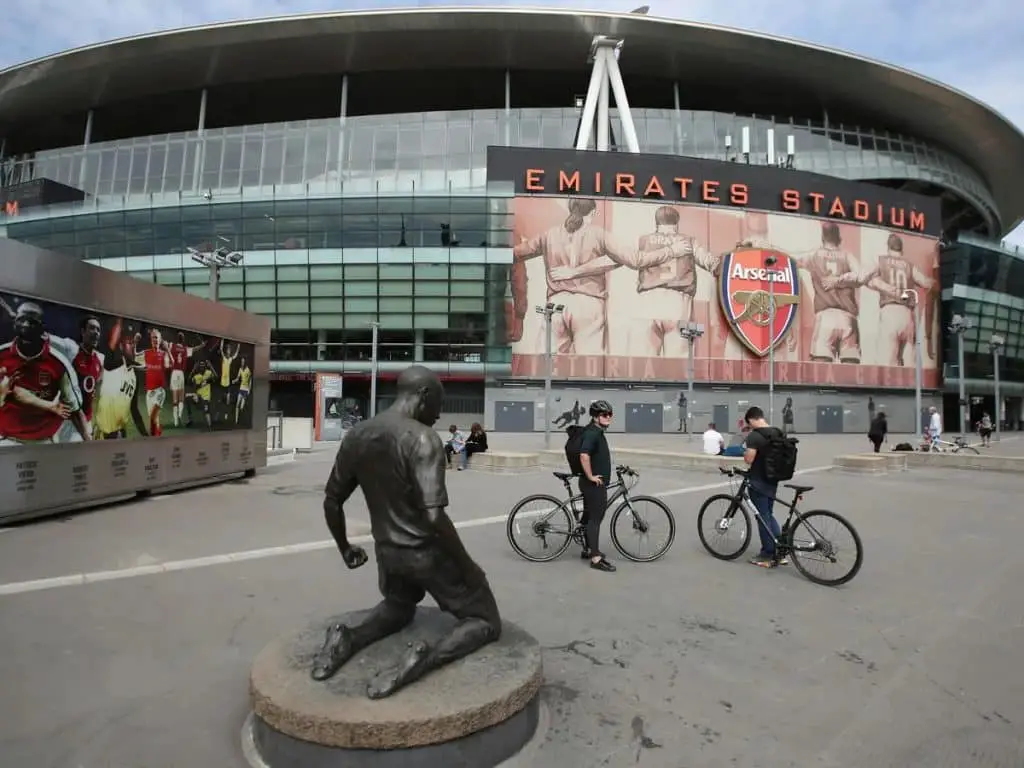
To plan your journey, use Transport for London’s online journey planner and select the ‘cycle only’ option. Once at the Emirates Stadium, secure cycle parking is available near the ‘Highbury House’ retail store on Drayton Park. Arsenal stewards can assist with locating the clearly signposted cycle parking area. Additional cycle parking facilities can be found on Islington Borough Council’s website.
By Tube and Train
The Emirates Stadium is accessible by tube and train, with several nearby stations:
Arsenal (Piccadilly Line): The closest tube station, approximately a 3-minute walk from the ground. Note that there is no step-free access from the station platforms to the exit.
Finsbury Park (Victoria, Piccadilly Lines and Great Northern rail): About a 10-minute walk, with wheelchair accessibility.
Highbury & Islington (Victoria Line, North London Line, and Great Northern rail): Also a 10-minute walk and wheelchair accessible.
King’s Cross is the primary connecting station for national rail and many underground lines. From King’s Cross, you can travel to the ground via the Piccadilly Line (to Arsenal) or the Victoria Line (to Highbury & Islington). King’s Cross station is wheelchair accessible. Additionally, a short overground rail journey of one stop takes you to Finsbury Park station.
Please note that Holloway Road station will be exit-only before matches and closed for up to 2 hours after the match. Pre-match eastbound trains will not stop at the station. Drayton Park is also closed on match days.
By Bus
Buses offer a fast and convenient transport option, with connections passing the Emirates Stadium on all sides. All Transport for London (TFL) bus routes are wheelchair accessible and feature clearly marked priority seats for individuals with limited mobility.
Main bus stops are located on Holloway Road, Nag’s Head, Seven Sisters Road, Blackstock Road, and Highbury Corner. High-frequency services will take you within a 5 to 10 minute walk of the ground, and direct routes cover much of north and central London. Further information on buses can be found on the TFL website.
By Coach
Coach parking is available only on match days. Queensland Road and Hornsey Road serve as coach parking sites for the Emirates Stadium, with just a short walk to reach the stadium. Note that minibuses are not permitted to park at the designated coach parking site.
To park at Emirates Stadium, follow the three-step booking procedure outlined on the information page. Coaches must arrive between four and two hours before the match and display their identification permit clearly in the front windscreen.
By Car & Motorbike
It is strongly advised not to drive to the Emirates Stadium, as the ground is situated in a predominantly residential area with an extensive Event Day Parking Scheme in operation. Only car owners with resident’s permits will be allowed to park on-street in designated areas, and any illegally parked cars will be towed away.
Blue Badge holders requiring accessible parking should visit the information page provided. For more information about traffic changes, CPZ operation times, and permit applications, visit Islington Council Parking for more info. For information check out the Matchday Parking Scheme in Hackney web page.
Crowd Management After Matches
To ensure safe entry and exit from local stations, a managed queuing system will be in place at the following stations:
- Arsenal station: Queuing will be outside on Gillespie Road.
- Finsbury Park station: Queuing will be outside on Seven Sisters Road/Isledon Road and St Thomas’s Road/Rock Street.
- Highbury & Islington station: Queuing will be on the south side of Holloway Road.
Spectators are advised to follow the route down Holloway Road as no direct access to the station or queuing system will be available from Highbury Fields.
Hornsey Road, from Benwell Road to Holloway Road, will be closed to pedestrians for emergency access only.
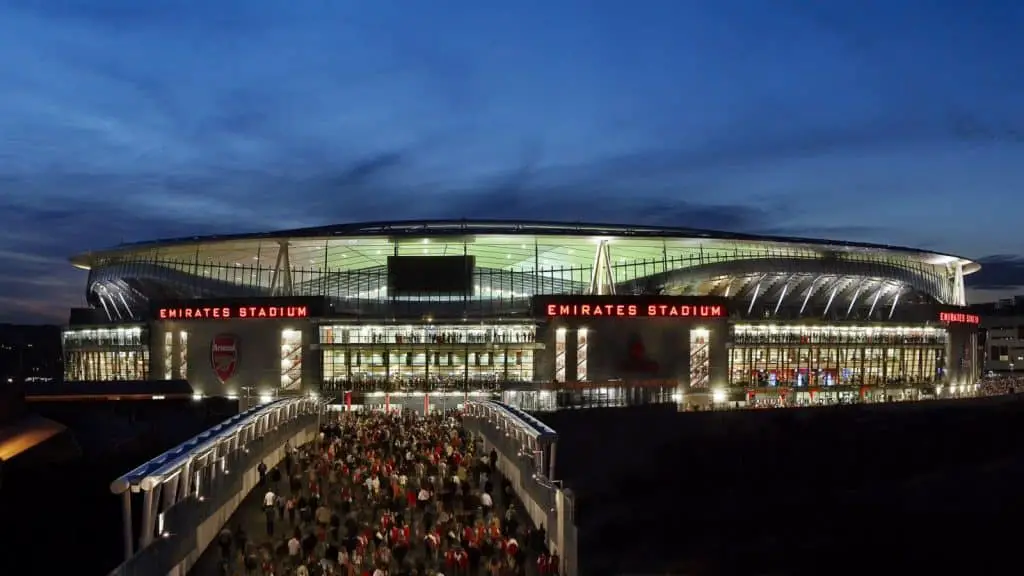
Good advice for Emirates Stadium visits
Arrive Early for the Best Experience
Arriving early is essential to get the most out of your visit to the Emirates Stadium, particularly on match days. To fully soak in the atmosphere and find your seat with ease, it’s recommended to arrive at least an hour before the game starts.
This will give you plenty of time to familiarise yourself with the surroundings, grab some refreshments, and even browse the merchandise stores. Arriving early can also help you avoid the rush and the crowds that can be quite daunting.
Stay Safe and Aware
While the Emirates Stadium is generally a safe and secure place, it’s always best to be aware of your surroundings and take some precautions. Keep an eye on your belongings at all times and be mindful of pickpockets or suspicious activities.
If you notice anything unusual, report it immediately to the nearest security personnel or steward. It’s also recommended to familiarise yourself with the emergency exits and evacuation procedures, just in case.
Bring Cash
Bringing cash is recommended as it’s often quicker to get served at the stadium, particularly during busy events. Although some vendors do accept card payments, cash is the preferred payment method.
Dress Appropriately
It’s important to dress appropriately for the weather conditions as the Emirates Stadium is an outdoor venue. During the colder months, it’s advisable to wear warm clothing and bring a waterproof jacket in case of rain. Wearing comfortable footwear is also recommended, as there may be a lot of walking involved.
Plan Your Journey in Advance
If you’re travelling to the Emirates Stadium by public transport, it’s crucial to plan your journey in advance. Check the latest travel updates before you leave and allow plenty of time to get to the stadium, especially if it’s your first time visiting.
Consider using a reliable transportation app or website to help you navigate your way around, and don’t forget to factor in potential delays or traffic. If you’re driving to the stadium, be aware that parking can be quite limited, and it’s often more convenient to use public transport.

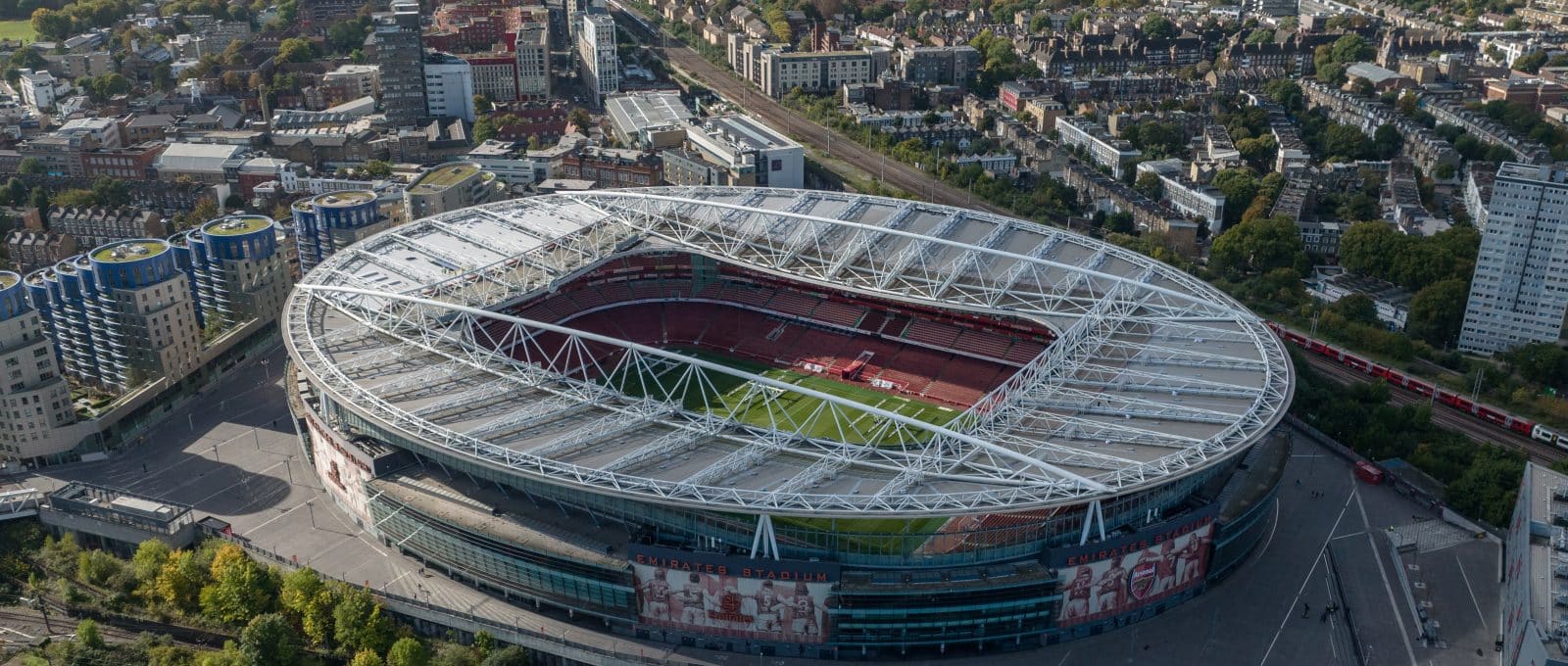
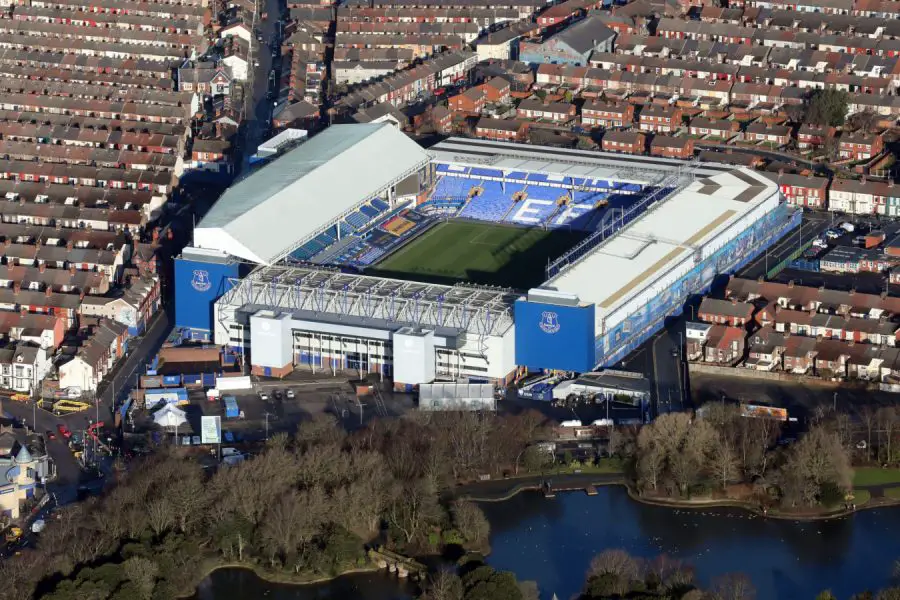
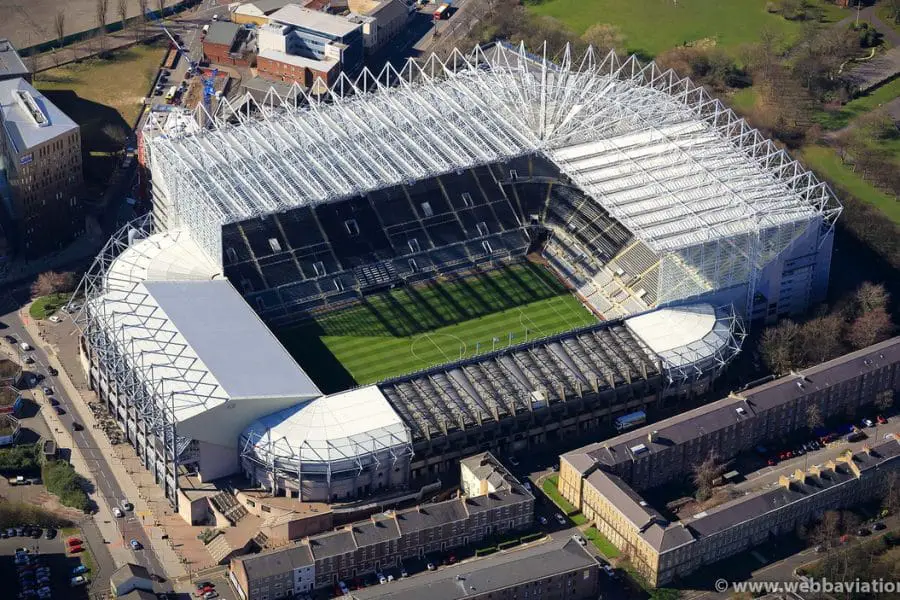
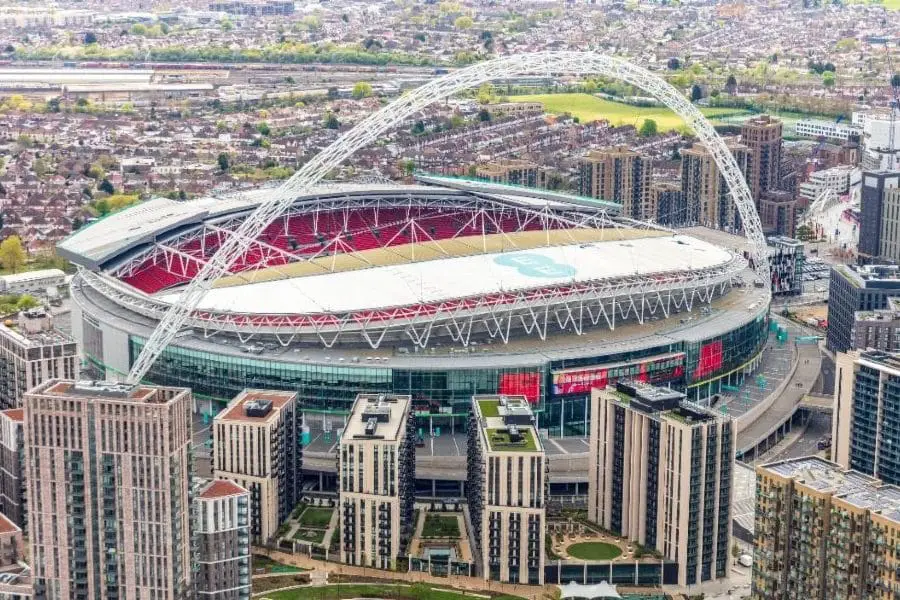
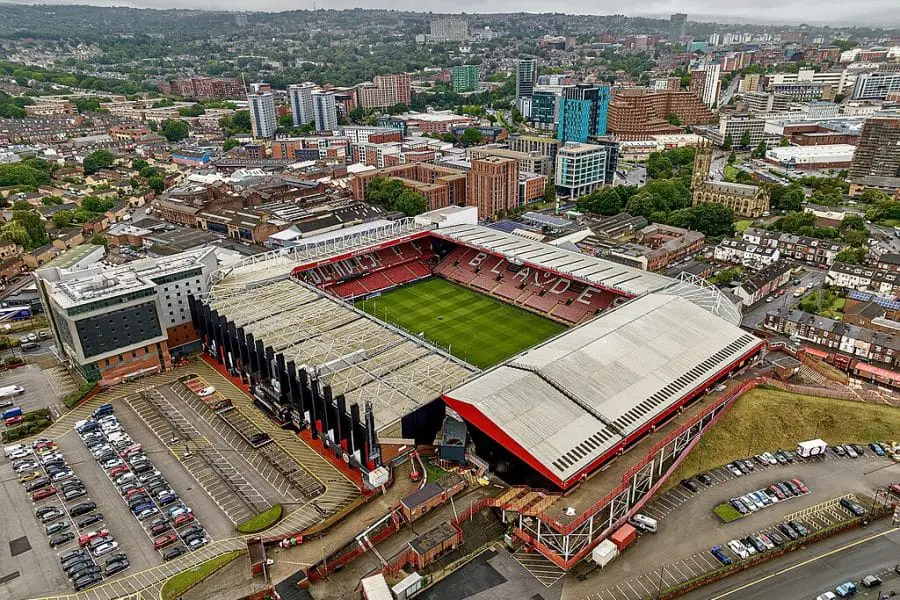
Leave a Comment